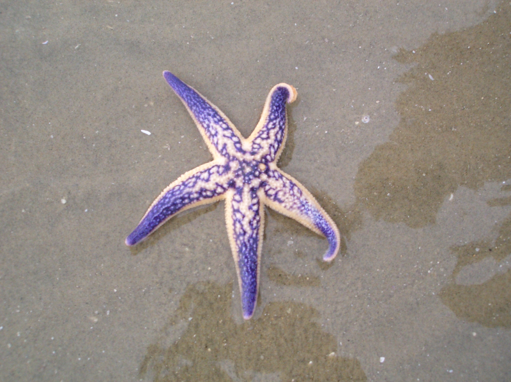We typically think of sea stars as being incredibly resilient creatures, as they can withstand a wide range of harsh conditions, and have the ability to regenerate, or regrow, their arms if they lose one when attacked. But sea stars, just like humans, are susceptible to deadly viruses. A few years ago sea stars started dying in massive numbers in the waters off the Pacific coast of North America. Sea stars were turning to sludge, dropping their arms everywhere along the seafloor, and the arms were CRAWLING AWAY. It looked like the zombie apocalypse – sea star edition.
The symptoms exhibited by all these sea stars included lesions, contorted bodies, inability to cling to rocks, and the dropping of half-dead arms. After just 48 hours with these symptoms, the sea star would turn into a giant pile of white mush. This became known as the Sea-Star Wasting Disease (SSWD), but identifying the culprit was no small feat. In order to identify the cause of this disease, scientists collected tissue samples from sick sea stars, made these tissue samples into a slush, and passed the slush through filters that removed large debris and bacteria, but allowed virus-sized particles to pass through. The resulting filtrate was then injected into healthy sea stars, and all of these sea stars began displaying symptoms of SSWD within two weeks. After confirming that virus-sized particles caused the onset of SSWD, researchers collected more tissue samples from sick and healthy sea stars, and sequenced the viruses in those tissues. Sick sea stars had a densovirus present in their tissues, which was eventually named the sea star-associated densovirus.

Sea star wasting disease is caused by the sea-star associated densovirus.
This virus actually belongs to a larger superfamily of viruses known as parvoviruses. If you own a dog, you’ve probably heard the term “puppy parvo”, and if so, you know it’s equally as bad as the SSWD. Luckily for dog-owners and puppies alike, there’s already a vaccine. Humans can also be infected by parvoviruses, notably B19. B19 parvovirus causes what’s known as fifth disease, which causes rashes and swollen joints.
Now I know, the parvovirus that infects humans doesn’t sound nearly as terrible as the current coronavirus that is spreading rapidly throughout human populations, so why should we care? For one, these parvoviruses can spread as easily as coronaviruses are proving to; the virus that causes SSWD infects a wide variety of sea star species, can pass through filtration systems in aquariums and infects widely geographically separated populations. Any virus that can obliterate an evolutionarily ancient animal like a sea star, given that sea stars can withstand huge ranges of temperature and salinity, and survive bacterial-dense environments, must be an incredibly successful virus, just like the infamous coronavirus.
Yesterday the victims of a viral epidemic were sea stars; today, the victims of a viral epidemic are us. However, the research we do today on animals like sea stars, may provide insight into how infectious diseases spread, thus helping to prevent or slow another pandemic tomorrow.
Peer edited by Jamshaid Shahir